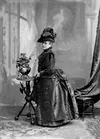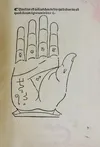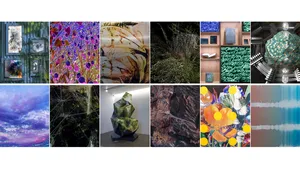Learn about Peru’s rich history through its National Library

The National Library of Peru’s doors are now open virtually for visitors worldwide through Google Arts & Culture. Explore online stories showcasing the country's rich heritage, where the dramatic landscapes of Peru intertwine with the legacies of ancient civilizations and the echoes of a more recent past.
Here are five highlights to start your trip through Peruvian history and modern-day life.
The library maze
Step into the Pocket Gallery and virtually walk among the highlights of the National Library’s collection, from the first manuscripts printed in Latin America to the art of José María Eguren, the only symbolist poet in Peru.
Pocket Gallery of the National Library of Peru

Lima through their clothes
Nineteenth-century fashion in Lima came from a blend of influences. There were traditional garments like the tapada limeña, a type of cloak women wore to conceal all of their face but one eye, allowing for anonymity and challenging societal norms. Thanks to trade by sea, there was also an influx of European styles. As you browse, discover how clothing reflected the city's evolving identity, the impact of the war with Chile and the changing roles of men and women in society.
Portrait of María Barberí, Courret Hermanos, from the collection of the National Library of Peru

From Venice to Lima: the journey of a fortune-telling book
Delve into palmistry with a 15th-century fortune-telling book that has survived centuries of turmoil. This rare treasure, donated by José de San Martín, reveals ancient beliefs about predicting the future through hand reading and offers a glimpse into the history of book printing.
A page from a book of palmistry, Anonymous, 1499, from the collection of the National Library of Peru

Stories hidden behind the ex libris in Peru
Learn about the secrets hidden within the pages of antique Peruvian books — not in the words themselves, but in the ex libris bookplates that mark their ownership. These intriguing labels reveal more than just people’s names. They also show intricate symbols and allegorical scenes based on the owners’ qualities and interests.
Exlibris album 1, page 14, Unknown[1900?], from the collection of the National Library of Peru

Peruvian female thinkers of the 19th century
Meet the pioneering women who defied societal norms and transformed Peru's intellectual landscape in the 19th century. The story spotlights figures like Flora Tristán, Juana Manuela Gorriti and Clorinda Matto de Turner, who used their voices to champion women's rights and social justice. Discover their struggles, triumphs and lasting contributions to Peruvian literature and society.
View of a tramway at Lima, from the collection of the National Library of Peru

Explore the wonders of the National Library of Peru at goo.gle/wondersofperu or on the Google Arts & Culture app, available for Android and iOS.







